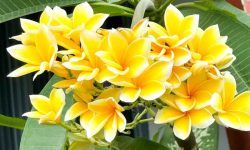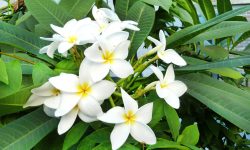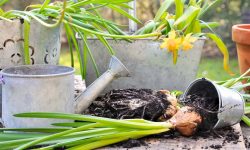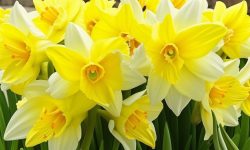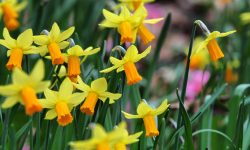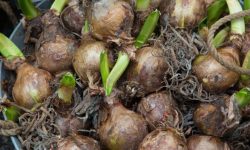Jasmine is more than just a plant—it’s a sensory experience. Its delicate blooms and intoxicating fragrance have enchanted gardeners for centuries. Knowing exactly when jasmine blooms allows you to enjoy its beauty at its peak and make the most of every precious flower.
Understanding its flowering cycle is only the beginning. With the right techniques, you can extend the blooming season, keep your garden fragrant for months, and enjoy more vibrant, healthy plants. Let’s explore how timing, care, and a few expert secrets can turn your jasmine into the star of your garden year-round.
Understanding Jasmine and Its Bloom Cycle
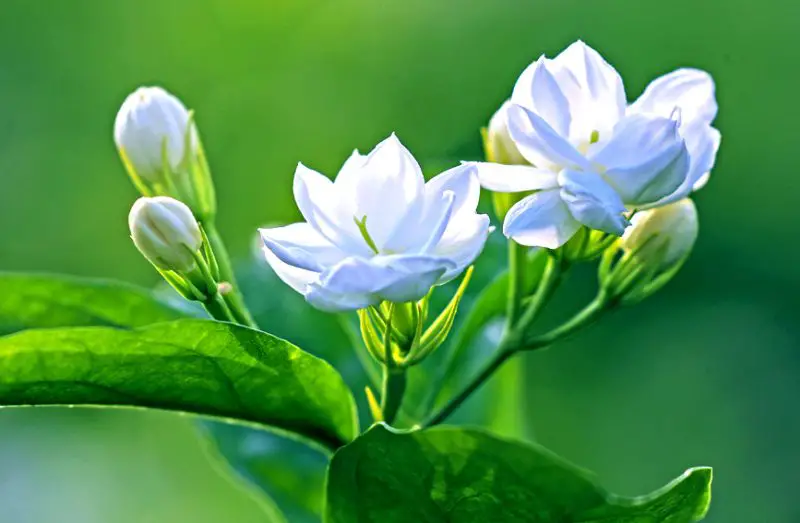
Jasmine is a member of the Oleaceae family, prized for its ornamental appeal and rich fragrance. Its bloom cycle is influenced by species, climate, and care. Most varieties follow a seasonal rhythm, producing flowers in response to temperature changes and daylight length. For example, common jasmine often blooms in late spring through summer, while winter jasmine opens its yellow flowers in the colder months.
The blooming process begins with bud formation, which depends on healthy foliage and strong root systems. Adequate sunlight, usually four to six hours daily, signals the plant to channel energy into bud growth. Once the buds mature, flowers open and release their signature scent, most potent during the evening. After the blooming phase, the plant may enter a rest period to recover energy.
Understanding this cycle is essential for maximizing blooms. By recognizing when buds form, you can adjust watering, fertilizing, and pruning to support flower production. The right timing ensures your jasmine not only blooms fully but also maintains vibrant color and strong fragrance. Each phase—from bud to bloom to rest—plays a role in keeping the plant healthy and productive year after year.
Popular Jasmine Varieties and Their Blooming Seasons
Common Jasmine (Jasminum officinale)
Common jasmine is a vigorous climbing variety with delicate white flowers and an intense, sweet fragrance. It blooms heavily during summer, typically from June to August in most temperate climates. In warmer zones, blooming may begin earlier and extend into early autumn. The plant’s slender stems can cover walls, trellises, and pergolas, making it ideal for vertical gardening. It thrives best in full sun with occasional light pruning to maintain shape and promote bud formation. Removing faded flowers during summer can trigger more blooms. Common jasmine is often used in perfumery due to its rich, heady scent that intensifies during warm evenings.
Arabian Jasmine (Jasminum sambac)
Arabian jasmine produces larger, waxy white flowers that release an intoxicating fragrance, especially at night. It is the national flower of the Philippines and one of the most cultivated varieties in Asia. This variety blooms almost year-round in tropical and subtropical climates, with peak flowering in late spring and summer. In cooler climates, it is usually grown in containers to protect it from frost. The flowers are often used for making jasmine tea and perfumes. Arabian jasmine prefers a sunny location with rich, well-drained soil and benefits from regular fertilization to maintain continuous flowering. Pinching off spent blooms encourages steady production of new buds.
Winter Jasmine (Jasminum nudiflorum)
Winter jasmine is unique because it flowers during the colder months, often from January to March. It produces cheerful yellow blooms that brighten gardens when few plants are in flower. Unlike most jasmine varieties, winter jasmine’s fragrance is light and subtle. This shrub-like plant is hardy and can tolerate temperatures well below freezing. It grows best on slopes, banks, or as a cascading plant over walls. Pruning right after flowering helps shape the plant and prepares it for next winter’s display. Its early blooming season makes it a valuable choice for adding off-season color to gardens in temperate and colder regions.
Spanish Jasmine (Jasminum grandiflorum)
Spanish jasmine features large, star-shaped white flowers with a mild yet pleasing fragrance. Blooming usually begins in late spring and continues into early autumn. In optimal climates, flowering may extend into October. This variety is widely grown for commercial extraction of jasmine essential oil, prized in high-end perfumes. It grows as a climbing vine, ideal for covering trellises or garden walls. Spanish jasmine thrives in full sun and requires regular watering during dry periods to sustain blooms. Pruning after the main flowering flush encourages a second round of lighter blooming before the season ends.
Cape Jasmine (Gardenia jasminoides)
Cape jasmine, though technically a gardenia, is often grouped with jasmines due to its strong, sweet scent. Its creamy white, rose-like blooms appear in late spring and can continue through summer. In warm climates, sporadic flowers may appear well into autumn. Cape jasmine is often grown in pots for patios or near entrances to enjoy its perfume. It prefers slightly acidic soil and consistent moisture without waterlogging. Pruning after the main blooming period keeps it tidy and encourages new buds. Its glossy, evergreen leaves make it attractive even when not in flower.
Factors That Influence Blooming Time
Light Requirements for Jasmine
Jasmine’s blooming process is highly dependent on light intensity and duration. Most varieties require at least four to six hours of bright sunlight daily. Light provides the energy the plant needs to form and open buds. Morning sunlight is especially beneficial because it is gentler and reduces heat stress. In areas with intense summer sun, partial afternoon shade prevents leaf scorch and flower wilting. Indoor jasmine should be placed near a sunny, south-facing window for maximum light exposure. If natural light is insufficient, use a full-spectrum grow light to simulate daylight. Keep the plant within the light’s optimal distance to avoid leaf burn. Consistent light levels throughout the growing season help maintain continuous blooming and prevent premature bud drop.
Temperature and Climate Impact
Temperature regulates jasmine’s metabolic rate, directly affecting flower initiation and longevity. Ideal daytime temperatures range between 20°C and 30°C, with cooler nights around 15°C. This mild fluctuation triggers hormonal signals that promote bud formation. Prolonged heat above 35°C can cause flowers to fade quickly or buds to drop. Conversely, frost and freezing temperatures damage stems and prevent blooming entirely. In cold climates, grow jasmine in containers to move indoors during winter. Position indoor plants in bright, cool spaces with temperatures above 10°C. For outdoor jasmine, protect with frost cloth or mulch in early winter. Stable temperatures throughout the flowering season ensure longer-lasting, healthier blooms.
Soil and Nutrient Balance
Jasmine requires soil that is both fertile and well-drained to sustain healthy root systems and abundant flowers. A sandy loam with a slightly acidic to neutral pH of 6.0 to 7.0 is ideal. Poor drainage leads to root rot, which weakens plants and reduces bloom output. Before planting, enrich the soil with compost or well-rotted manure to boost organic matter. During active growth, feed jasmine every four to six weeks with a balanced 10-10-10 fertilizer. As buds begin to form, switch to a phosphorus-rich formula to encourage more blooms. Avoid excessive nitrogen, which promotes leafy growth at the expense of flowers. Regular soil checks and amendments maintain nutrient balance, keeping jasmine productive year after year.
How Climate Affects Blooming Patterns
Climate plays a critical role in jasmine’s flowering schedule, influencing both the timing and abundance of blooms. Temperature, sunlight, and humidity all affect the plant’s growth cycles and bud formation. Most jasmine varieties thrive in warm, temperate climates, where daytime temperatures range between 20°C and 30°C. These conditions promote vigorous growth and steady flower production. Cooler nights around 15°C help trigger hormonal signals that stimulate bud initiation.
Extreme temperatures, however, can disrupt blooming. Prolonged heat above 35°C can cause buds to wither or drop before opening. Frost or freezing conditions can damage stems and buds, delaying flowering or preventing it entirely. For tropical species like Arabian jasmine, consistent warmth allows almost year-round blooms, while temperate varieties like common jasmine have a more defined summer flowering period.
Sunlight exposure also varies with climate, directly affecting flower quantity. Regions with longer daylight hours encourage more frequent blooms, while areas with shorter days may limit flowering to a few weeks. Humidity levels influence bud health as well; low humidity can cause bud desiccation, while excessive moisture increases the risk of fungal infections.
Gardeners can adjust for climate effects by choosing suitable jasmine varieties for their region, providing shade during extreme heat, or protecting plants from frost. In colder areas, container-grown jasmine can be moved indoors, and mulch can insulate outdoor roots. Understanding how climate impacts bloom patterns helps ensure more reliable and abundant flowering throughout the year.
Encouraging Earlier Jasmine Blooms
Choosing the Right Variety for Your Climate
The first key to early jasmine blooms is selecting a variety that naturally suits your local climate. Tropical types like Arabian jasmine thrive in warm, humid conditions and can flower almost year-round. They respond quickly to consistent warmth, producing buds much faster than temperate varieties.
In cooler regions, winter jasmine is ideal because it naturally blooms in late winter to early spring. Gardeners in areas with short summers should choose varieties with shorter growth cycles. This ensures the plant completes its bloom before cold weather returns, avoiding bud drop or delayed flowering. Container-grown jasmine adds flexibility, allowing movement indoors or to sheltered spots when temperatures fluctuate.
Matching the right variety to climate reduces stress, encourages vigorous growth, and accelerates bud initiation. Plants that are comfortable in their environment produce stronger stems, healthier foliage, and earlier, more abundant flowers. This foundational step dramatically increases the chances of enjoying jasmine blooms ahead of schedule.
Optimizing Sunlight Exposure
Sunlight directly affects jasmine’s flowering timeline. Plants require at least six to eight hours of bright, direct sunlight daily. Morning and midday sun are especially important in cooler zones, providing warmth that triggers rapid bud development.
Avoid shaded areas, as low light slows metabolism, delays flowering, and weakens stems. For potted jasmine, moving containers to sunnier spots during the pre-bloom phase can accelerate bud formation. Consistent exposure to ample sunlight strengthens stems, encourages leaf growth, and ensures energy is directed toward flower production. Well-lit conditions also enhance fragrance intensity, producing more aromatic blooms. Adjusting light placement seasonally, especially in early spring, helps coax jasmine into flowering earlier than it would under suboptimal conditions.
Techniques to Extend Flowering Time
Pruning for Continuous Blooming
Pruning is a vital technique to encourage jasmine to produce flowers continuously. The ideal time is immediately after the first bloom cycle ends. Removing spent flowers and trimming weak or leggy stems directs the plant’s energy toward new bud formation.
Light pruning throughout the growing season helps maintain a compact and attractive shape. By cutting tangled, crowded, or overlapping stems, air circulates more freely through the foliage. This reduces the risk of fungal infections and pest infestations while allowing sunlight to reach inner shoots. Strong, healthy branches develop more flower buds, which increases bloom quantity and duration. Regular, strategic pruning keeps jasmine productive, ensuring fresh flowers appear throughout the growing season rather than in a single, short flush.
Feeding for Extended Flower Production
Balanced fertilization is critical for long-lasting jasmine blooms. Use a fertilizer high in phosphorus and potassium to stimulate bud formation and flower longevity. Apply every four to six weeks during active growth.
Avoid overfeeding with nitrogen, which promotes leafy growth at the expense of blooms. Combine feeding with consistent watering so nutrients are absorbed effectively. Healthy, well-fed jasmine produces more buds, blooms earlier, and flowers longer than stressed plants. Strategic feeding, paired with proper pruning and light exposure, maximizes both the visual impact and fragrance of your jasmine throughout the season.
Seasonal Care Routines for Long-Lasting Blooms
Spring Care for Strong Bloom Start
Spring is when most jasmine varieties begin their active growth. Increase watering as temperatures rise to keep soil evenly moist. Apply a balanced, slow-release fertilizer to encourage healthy shoots and early buds.
Remove any dead or frost-damaged stems to improve airflow and reduce disease risks. Training climbing varieties onto supports at this stage helps maximize light exposure. Healthy spring growth directly impacts how long the plant will bloom later in the year.
Summer Care to Sustain Flowering
During summer, jasmine benefits from consistent moisture, especially in hot climates. Water deeply but allow the top layer of soil to dry slightly between waterings. Apply a high-phosphorus liquid feed every four weeks to promote continuous blooming.
Deadhead spent flowers regularly to stimulate the plant to produce new buds. Provide light afternoon shade in extreme heat to prevent stress. This balance of care helps flowers last well into late summer.
Fall Care to Prepare for Extended Bloom
In early fall, reduce feeding slightly while maintaining consistent watering. This keeps the plant strong without forcing excessive new growth before cooler weather. For repeat-blooming varieties, pruning lightly can trigger an additional flush of flowers.
Inspect for pests such as aphids, which can weaken buds. As temperatures drop, potted jasmine may be moved to sheltered spots. Healthy plants in fall often keep blooming into the early cool season.
Winter Care for Blooming Varieties
Winter jasmine and other cold-tolerant species can bloom during this season. Keep soil moist but not soggy, as cold roots are sensitive to excess water. In frost-prone areas, apply mulch to protect the root zone.
For indoor jasmine, place plants near bright windows to maximize winter light. Maintain moderate humidity with a humidifier or pebble tray. These steps ensure healthy winter blooms and prepare the plant for spring growth.
Troubleshooting Bloom Problems
Identifying Common Blooming Issues
One frequent issue is vigorous leaf growth without any flowers. This often results from excessive nitrogen in the soil. High nitrogen supports foliage but suppresses bud formation. Bud drop before opening is another common frustration. This may occur due to irregular watering or sharp temperature fluctuations that stress the plant.
Flower production can also slow if jasmine becomes root-bound. When roots circle the pot and fill all available space, nutrient uptake decreases. Potted jasmine may show reduced bloom cycles and smaller flowers. Recognizing these signs early helps prevent long gaps between blooming periods.
Correcting Nutrient Imbalances
If leaves are lush but blooms are scarce, reduce the frequency of nitrogen-heavy feeds. Switch to a fertilizer higher in phosphorus to boost flowering. Potassium supports stronger stems and extends bloom life.
Micronutrients like magnesium aid in chlorophyll production, ensuring efficient photosynthesis. Iron helps prevent yellowing leaves, which can weaken flowering capacity. Make nutrient changes gradually to avoid shocking the plant’s growth cycle. Healthy nutrient balance is the foundation for abundant, long-lasting blooms.
Managing Environmental Stress
Temperature stress can greatly affect bloom timing. Extremely hot weather may cause buds to wither before opening. Frost exposure can kill flower buds entirely. Providing light shade in peak heat prevents dehydration. Mulching in winter protects roots from temperature swings.
Consistent soil moisture is essential, especially during bud formation. Dry spells cause plants to conserve energy, slowing flower production. For potted jasmine, place them where temperatures remain stable. Reducing environmental stress leads to more reliable and longer blooming seasons.
Advanced Techniques to Maximize Jasmine Blooms
Using Growth Cycles to Time Bloom Peaks
Jasmine grows in active and rest phases. During active growth, usually in spring and early summer, the plant produces new shoots and leaf nodes. These are the sites where future buds form. Applying phosphorus-rich fertilizer at this stage boosts bud initiation.
In rest phases, usually in cooler months, the plant focuses on root health and energy storage. Avoid heavy feeding but maintain consistent watering. This ensures the plant enters its next active cycle with stored energy for abundant flowering. Tracking these cycles lets you predict and enhance bloom peaks.
Controlled Pruning for Bloom Stimulation
Pruning plays a major role in jasmine’s blooming potential. After a bloom cycle, pruning removes old wood that no longer produces buds. This directs the plant’s energy toward new, flower-bearing shoots.
Always cut just above healthy nodes to encourage branching. Remove weak, crossing, or shaded stems that block light from reaching inner growth. Proper pruning improves airflow, reducing disease risks while encouraging uniform flowering. Timely pruning prevents accidental removal of next season’s buds.
Supplemental Lighting for Indoor Jasmine
Indoor jasmine often faces insufficient light, especially in winter. Without enough daylight hours, plants may produce few or no blooms. Installing full-spectrum LED grow lights solves this problem by mimicking natural sunlight.
Position the lights 12 to 18 inches above the foliage. Keep them on for 12 to 14 hours daily during low-light months. This extended “daylight” helps maintain steady bud production. Regular light exposure is essential for winter-blooming jasmine varieties such as Jasminum polyanthum.
Season-by-Season Jasmine Care for Maximum Blooms
Spring Care for Active Growth
Spring marks the start of jasmine’s most active growth phase. Increase watering to keep soil evenly moist but not waterlogged. Apply a balanced fertilizer with higher phosphorus content to support strong bud development. Inspect plants for winter damage and prune away any dead or weak stems. This ensures sunlight reaches emerging shoots.
Training climbing jasmine on trellises or supports during this season directs growth and encourages even flowering. Monitor for pests like aphids, which can appear with warmer weather. Early control prevents damage to tender shoots.
Summer Care for Extended Blooming
Summer provides warm temperatures and long daylight hours that jasmine loves. Continue regular feeding every four to six weeks to fuel flower production. Remove faded blooms to encourage the plant to produce more buds.
Water deeply but less frequently to promote deeper root growth, especially in hot weather. Light pruning can help maintain shape and prevent overcrowding of stems. If temperatures become extreme, provide partial afternoon shade to prevent bud drop and dehydration. With consistent summer care, jasmine will reward you with continuous and fragrant blooms.
Fall Care for Bloom Preparation
Fall is a transitional season for jasmine. Reduce fertilizer frequency to help the plant shift energy from active growth to root strengthening. Continue watering regularly, but avoid keeping the soil soggy as cooler nights slow evaporation.
Prune lightly to remove dead or tangled stems, improving airflow before the dormant phase. For potted jasmine, check the root system and repot if growth is restricted. This prevents stress during winter. Inspect for pests and treat before bringing plants indoors in cooler regions.
Winter Protection for Healthy Buds
Winter care depends on climate. In mild regions, jasmine may continue to bloom lightly. Keep watering minimal but consistent, avoiding complete dryness. Mulch around outdoor plants to insulate roots and maintain soil warmth.
In colder areas, move potted jasmine indoors before frost. Place it in a bright spot with cool but stable temperatures. Reduce feeding during winter, as over-fertilizing can cause weak growth. Maintain humidity indoors with a pebble tray or regular misting. This prevents leaf drop and keeps buds healthy for the next blooming season. Proper winter care ensures a strong and vibrant start in spring.
Troubleshooting Blooming Problems
Lack of Blooms Despite Healthy Growth
Sometimes jasmine grows lush foliage but produces few flowers. This often happens when nitrogen levels in fertilizer are too high. Nitrogen promotes leafy growth at the expense of blooms. Switch to a fertilizer higher in phosphorus and potassium to stimulate bud formation.
Another reason can be insufficient sunlight. Jasmine generally needs at least six hours of direct light daily to bloom well. For indoor plants, move them closer to a sunny window or use full-spectrum grow lights. Correcting light and nutrient balance often restores flowering within a season.
Bud Drop Before Opening
Bud drop occurs when developing flowers fall off prematurely. Common causes include sudden temperature changes, inconsistent watering, or very low humidity. Water evenly to keep soil moist without overwatering.
If temperature swings are unavoidable, especially indoors, try keeping the plant away from heating vents or drafts. In dry climates, increase humidity with misting or a pebble tray. Reducing stress factors helps buds mature fully and open into fragrant flowers.
Short Blooming Period
If blooms fade too quickly, the plant may be under stress from heat, pests, or nutrient deficiencies. Provide afternoon shade in very hot weather. Keep an eye out for aphids or thrips that can damage petals.
Deadhead regularly to signal the plant to produce more buds. Consistent care and removing spent blooms extend the flowering period significantly.
Expert Tips to Extend Jasmine Flowering Season
Choose Varieties with Different Blooming Times
To enjoy jasmine flowers for months, select varieties that bloom in different seasons. Common jasmine blooms in summer, Arabian jasmine can flower year-round in warm climates, and winter jasmine offers color in colder months.
Planting multiple varieties in your garden ensures overlapping bloom periods. This approach gives you continuous fragrance and beauty. In mixed plantings, provide each variety with its preferred light, soil, and watering conditions. Matching care to each plant’s needs maximizes bloom performance.
Practice Timely and Targeted Pruning
Pruning at the right time is essential to extend blooming. For summer-blooming varieties, prune lightly just after the main flowering period. This encourages new shoots, which produce more flowers in the same season.
Avoid heavy pruning during active bud formation, as this can remove potential blooms. Remove only dead, weak, or overcrowded stems to improve airflow and light penetration. Healthy shoots will produce more buds, extending the season naturally.
Feed Consistently with Bloom-Boosting Fertilizers
Regular feeding with a fertilizer high in phosphorus and potassium supports ongoing flower production. Apply every four to six weeks during the growing season.
Avoid excessive nitrogen, which promotes leaf growth but delays flowering. Use slow-release formulas for steady nutrient availability. Consistent feeding keeps the plant’s energy directed toward bloom production rather than vegetative growth.
FAQ About When Jasmine Blooms
When does jasmine usually bloom?
Most jasmine varieties bloom in late spring or summer, though timing depends on species and climate. Winter jasmine produces flowers in late winter to early spring, while Arabian jasmine can bloom almost year-round in warm conditions. Knowing your specific variety helps predict its peak season.
How long does jasmine flowering last?
Flowering can last several weeks to several months, depending on care, variety, and environmental conditions. Regular pruning, feeding with bloom-friendly fertilizer, and removing spent flowers can significantly extend the blooming period. Providing consistent moisture and sunlight also helps maintain continuous blooms.
Can I make jasmine bloom twice in one year?
Yes, some varieties can bloom more than once a year if cared for properly. Light pruning after the first bloom encourages new shoots, which often produce a second flush of flowers. This works best in climates with mild seasons and long growing periods.
Why is my jasmine not blooming?
Lack of blooms can be due to insufficient sunlight, excessive nitrogen fertilizer, or incorrect pruning. Ensure the plant receives at least four to six hours of direct sunlight. Use a balanced fertilizer, and prune only after flowering to avoid removing future buds.
Does jasmine need winter care for better blooms?
Yes, especially in colder climates. Protect roots with mulch and, for potted plants, move them indoors before frost. Reduce watering during dormancy but keep the soil slightly moist. A well-rested plant in winter often produces more abundant blooms in spring or summer.
Conclusion
Jasmine brings fragrance and beauty that can last for months with the right care. By choosing suitable varieties, pruning at the right time, feeding regularly, and protecting plants from harsh conditions, you encourage longer blooming. Each act of attention rewards you with more flowers and richer scent, turning your garden into a place of lasting charm and peaceful delight.

